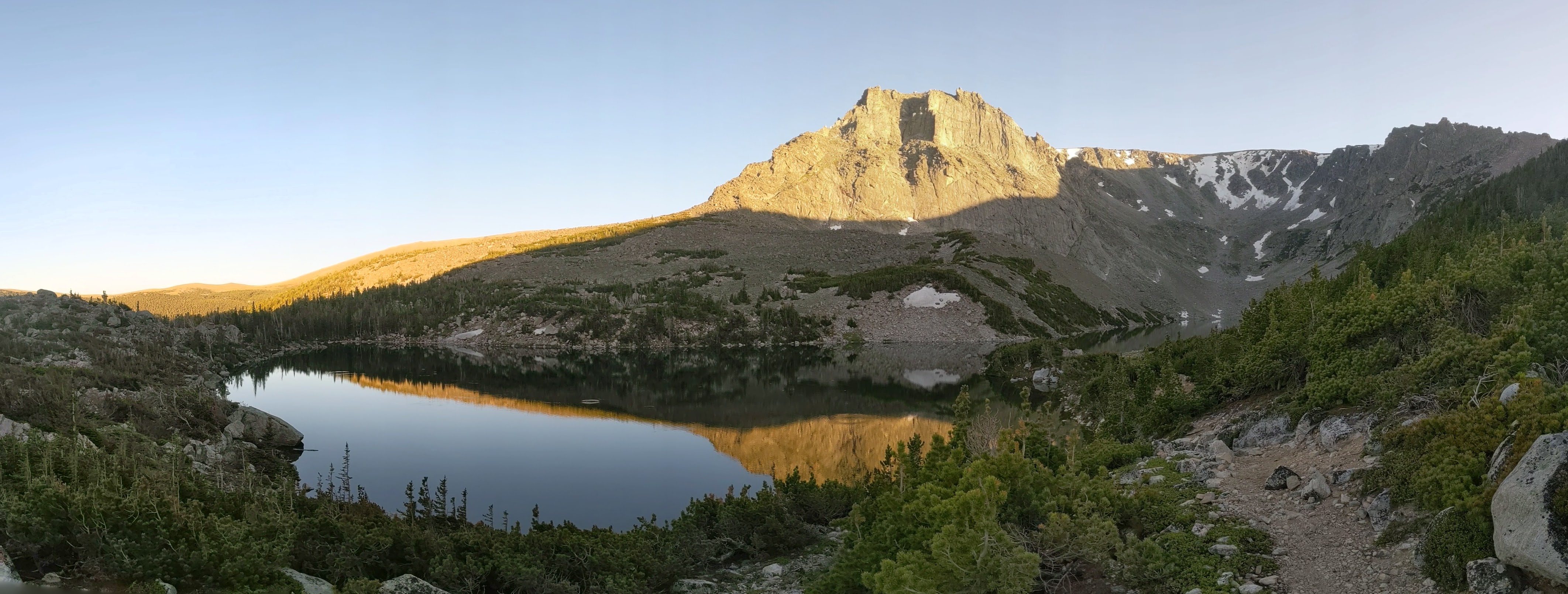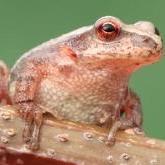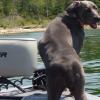-
Posts
999 -
Joined
-
Last visited
-
Days Won
1
Kayser last won the day on October 21 2019
Kayser had the most liked content!
About Kayser
- Birthday 09/30/1989
Contact Methods
-
Website URL
http://
Profile Information
-
Gender
Male
-
Location
AR, MO, MT
-
Interests
Hunting, fishing, camping/hiking/backpacking, rugby, surfing this forum.
Recent Profile Visitors
16,407 profile views
Kayser's Achievements

Stippled Darter (48/89)
201
Reputation
-
 Daryk Campbell Sr reacted to a post in a topic:
Sacrilege!
Daryk Campbell Sr reacted to a post in a topic:
Sacrilege!
-
 Johnsfolly reacted to a post in a topic:
Sacrilege!
Johnsfolly reacted to a post in a topic:
Sacrilege!
-
Kayser changed their profile photo
-
Now imagine the looks if you're trying to get a fish for dinner, and break out a nightcrawler. The horror! The fish in that river see very few large baits presented well, and respond as you would expect a large predator to. October is a fun month. 😉
-
 Kayser reacted to a post in a topic:
Sacrilege!
Kayser reacted to a post in a topic:
Sacrilege!
-
 Kayser reacted to a post in a topic:
Stirring the pot but there is much truth to this.
Kayser reacted to a post in a topic:
Stirring the pot but there is much truth to this.
-
 Kayser reacted to a post in a topic:
Looking into the sky
Kayser reacted to a post in a topic:
Looking into the sky
-
 Kayser reacted to a post in a topic:
Wyoming/Montana Fly Fishing Info
Kayser reacted to a post in a topic:
Wyoming/Montana Fly Fishing Info
-
 Kayser reacted to a post in a topic:
Wyoming/Montana Fly Fishing Info
Kayser reacted to a post in a topic:
Wyoming/Montana Fly Fishing Info
-
 Kayser reacted to a post in a topic:
Wyoming/Montana Fly Fishing Info
Kayser reacted to a post in a topic:
Wyoming/Montana Fly Fishing Info
-
Trying to send a PM- is your inbox full?
-
 Kayser reacted to a post in a topic:
Two very different floats...
Kayser reacted to a post in a topic:
Two very different floats...
-
Kayser started following Double Improved Clinch Knot , Two very different floats... , After an extended hiatus… and 1 other
-
I’d also note- we’ve started catching the silver redhorse again in the upper river. They were pretty much gone for about 20 years or so, so it’s refreshing to see them back. Channel catfish are doing pretty well again, too. Haven’t seen any gigged gamefish (living, dead, or filleted carcasses) in a long time, and the smallmouth are more prevalent than you might think- even a barely perceptible current is enough for them if they have deep water and shaded cover- boulders, timber, etc. I seem to find more smallmouth around boulders, and spots around tree trunks. Spots are healthy, and make really good fillets- especially at 12x day. Lots of fun on chartreuse mini buzzbaits.
-
Love your trip reports. Grew up fishing that river from a canoe, and the biggest day-to-day factor I’ve noticed is fishing outside of the noon-4pm window. The biggest year-to-year factor I’ve noticed is how high and muddy it stays through the prior gigging season.
-
To answer the original question- Reddit is making some very unpopular moves, and a lot of folks are abandoning the platform. Which means more time for other online distractions. Like OAF, for example.
-
 Kayser reacted to a post in a topic:
Miami Multi-species Madness
Kayser reacted to a post in a topic:
Miami Multi-species Madness
-
 Kayser reacted to a post in a topic:
Snakehead Expedition 5/31/23
Kayser reacted to a post in a topic:
Snakehead Expedition 5/31/23
-
 nomolites reacted to a post in a topic:
After an extended hiatus…
nomolites reacted to a post in a topic:
After an extended hiatus…
-
 BilletHead reacted to a post in a topic:
After an extended hiatus…
BilletHead reacted to a post in a topic:
After an extended hiatus…
-
It felt good to be back in these hills. Trying to figure out the photo size limit to add some more interesting stuff.
-
 Johnsfolly reacted to a post in a topic:
Managing for quail?
Johnsfolly reacted to a post in a topic:
Managing for quail?
-
Sounds about right- everything changing over to stay profitable. Fescue and no food or cover.
-
It really is, if you have no restrictions on what you're doing with the land. Unfortunately, we need to mostly keep this as semi-productive hay pasture, mowing once a year. I don't think burning is an option, due to proximity of houses to the fields. We're trying to delay mowing the hay until after the early breeding season (mid-June), so the warm-season grasses can get large enough to be decent hay and the quail have time to hatch and escape farm equipment. I'm trying to put together a plan of edge-feathering that would provide enough cover areas with brushy undergrowth to maintain habitat through that mowed period. I'd also like to leave unmowed borders along the brush patches in the pasture, plus maybe let the waterways grow up every couple of years. BUT- I think the area could highly benefit from some nitrogen-fixing plants added to the mix, some taller native bunch-grasses, and just a little better diversity overall. I know this is possible, because the best quail populations ever were in the 1950s- so there's a way to have both hay and quail. I'm currently trying to figure out the best, cheapest, and easiest way to meet that goal. From what I've learned, tame quail just feed hawks and coyotes. There are wild quail in the area, and I'd like to encourage them to colonize this property and give them the right ingredients to establish a few coveys.
-
 ness reacted to a post in a topic:
Managing for quail?
ness reacted to a post in a topic:
Managing for quail?
-
Looking for suggestions from any quail fanatics on how to improve what I would call "nearly depleted hay ground" to hold a few coveys of quail. We're looking to improve some mixed hay pasture/timber land in the Union Breaks geographical region. There's a few quail running around the area in the spring, but we've only seen 1 on the property itself. We mostly hunt deer there right now, but we'd love to see more quail and rabbits on the place. Photos below are the 100+/- acre parcel map outlined in red, and a photo of the north pasture. Pastures get mowed/hayed once a year, typically June. Creek runs east-west through the center, hills sloping up to north and southwest. We have a couple thicker brush patches in the north pasture, and are looking at which trees to drop to feather the edges. Pastures are mostly little bluestem, maybe a bit of clover, and god only know what else (photo below). The SW pasture is patchy/barren on a hillside. SE pastures are kinda flat, mixed material. Minimal fescue. Questions: 1. What seed could we overseed/broadcast spread in February during a freeze/thaw cycle that would germinate and improve the habitat? Can't be a problem for hay production. 1.a Grass, legume, forbs/wildflowers/other broadleafs? Hoping for something native. 2. What food plots could we plant that would benefit both deer & quail? 3. Any suggestions for planting strips broomcorn/sorghum (visual cover + food)? Want to break up the visibility of the place from the road, provide some visual cover for walking to deer stands, and add a bit of winter food for wildlife. 4. Suggestions for a biologist or other pro that might have some better suggestions? MDC, Quail Unlimited, etc?
-
 Sam reacted to a post in a topic:
Eat those Drum!
Sam reacted to a post in a topic:
Eat those Drum!
-
Any luck catching that drum?
-
 kjackson reacted to a post in a topic:
Eat those Drum!
kjackson reacted to a post in a topic:
Eat those Drum!
-
 SpoonDog reacted to a post in a topic:
Eat those Drum!
SpoonDog reacted to a post in a topic:
Eat those Drum!
-
 BilletHead reacted to a post in a topic:
Eat those Drum!
BilletHead reacted to a post in a topic:
Eat those Drum!
-
Drum are delicious, but require a different approach to cooking since anything over 1.5# or so gets rubbery- or just plain tough. If you want it fried, then slice it thin against the grain into chips or nuggets. DO NOT OVERCOOK. But it's fantastic on the grill, especially with blackened redfish seasoning- holds up really well on the grates. I've boiled it like shrimp, and it's good, but there's better. Made into a creole/stew with tomatoes, peppers, onion & garlic is pretty tasty. Braised low & slow in the oven with butter and onions is to die for. It's a shame so many people fry whole fillets and then assume it's no good to eat since it got tough. Treat it right, and you'll never throw another one back. Edit- I forgot to add, that in a side-by-side taste test of fried crappie, big bluegill, 3 species of catfish, drum, and white bass- the drum nuggets were always the first to disappear. Always.
-
The Pitzen knot is probably my favorite, since it's easy to tie, incredibly strong, and doesn't waste much line. But I had a 50% failure rate when I pull tight on fluoro- the knots that held were still fantastic, but half of them didn't hold. Enter the double Pitzen, courtesy of Shaw Grigsby. Loop of line through the eye, pull up and pinch another loop at the top and wrap three twists down towards the hook, put the first loop up through the second loop, wet, pull tight, cinch down, trim tags. It's unbelievable, and it's a lot easier than a Palomar, especially on big baits. And if you leave enough tag, it works great for drop shotting, too- just pass the single tag through the eye of the hook, add a weight.
-
Several years ago, I was going to college in Rolla and fly fishing the area regularly. I met a gentleman on the Current River, and we chatted for quite a while as we crossed paths. On my way out, something told me to take a photo of him in the river. I've always liked the photo, but even more- I've respected the man, as one of the local conservation areas I frequented back then bears his name. I recently found the photo on my phone, and thought I should share it. I edited it some, trying to get an older magazine cover sort of feel. Always wanted to put an "Outdoors Missouri" title across the top to make it look more like an actual cover, but never got around to it. I believe some of you know him, but I'll avoid using his name out of privacy. I doubt he'll see it here, but somebody might pass it along if they know him.
-
One pound of meat off a seven lb fish? That thing sounds malnourished.
-
Two problems- red meat, and it's tough. I've eaten a boatload of them, and think they're fantastic. When you catch one, keep the larger, more plump ones- 2 lb and up is a good metric, or anything that looks like it'll give a good fillet. I like to cut a gill, and throw them in ice so they bleed out and preserve the meat quality (I do this with catfish, white bass, and walleye too). Fillet the fish like you would a white bass, leaving the red meat on the skin, then cut out the mud line and heavy pin bones together. There isn't any meat over the ribs, so don't bother with that. If you're frying the fish, cut into slices against the grain, bread it and deep fry fast and hot so it doesn't have time to get tough- you wind up with drum nuggets that are a fantastic appetizer. It's usually more popular than blue cat taken from the same water, and disappears first. It makes excellent blackened fish, as well, and holds up really well on the grill. I tried boiling it once, but wasn't impressed. It's really good in a fish creole, with onion, garlic, celery, a can of Rotel, Cajun spices, cooked down and served over rice. I've heard the big ones are really good baked with butter and onions, too, but low and slow. I've yet to try that, and don't know if I'll get a chance to do that since moving to Montana. I cannot recommend healthy-looking drum enough as a food fish, especially if you're looking to do something other than fry it.





reduced.thumb.JPG.2b21f855322683ce0cfed2eea0aff10c.JPG)





